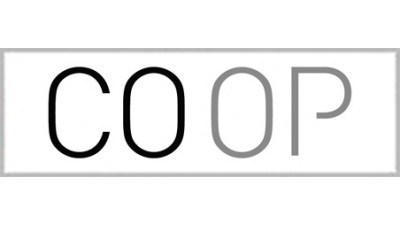The Best Time For Developers To Engage A Branding Firm? Before Construction Begins

Often, real estate developers begin thinking of branding and marketing once a project is nearly complete and ready to open. But according to branding experts, there are big competitive advantages to defining a project’s brand before even breaking ground.
“Ideally, your brand is reflected in every aspect of a project,” said Ashleigh Dubost, director of marketing at CO OP, a destination brand company in New York City and Los Angeles. “It can be a beacon that helps guide a developer from blueprints to lease-up. But it’s difficult to take full advantage of what a brand can do if you begin the process too late.”
Dubost, along with Simon Hunter, CO OP’s partner and chief innovation officer, identified a few of the benefits for developers who think about branding early on.
1. Branding Early Can Help Developers Identify Their Target Audience
Developers may know certain things up front: the acreage, whether their project will have condominiums, commercial space or retail. And they may have a sense of what will set their project apart from the one next door: perhaps it’s a star architect, a convenient location, luxury amenities or incredible views.
“However, many developers don’t set out with a strategy for how to communicate the right story to the specific target audiences,” Dubost said. “Some may not even be entirely certain who that audience is outside of the estimated age range and target household income.”
Dubost said her team begins the branding process with a comprehensive research phase that looks beyond surface-level demographics to uncover the psychographic insights of the target audience, asking questions such as: What do people think of this neighborhood? What is its identity? What do its residents care about? What do they desire?
She explained that these findings allow developers to understand the rational (and sometimes irrational) qualities that people value in a place. CO OP’s research methods could come from various sources, including conducting interviews with local business development associations, attending town hall meetings, speaking with customers and business owners at local restaurants and bars or scouring Yelp reviews and Instagram mentions of their competitors.
“There’s nothing more critical to a successful development branding process than learning what a community values in a place, and getting their honest opinions and feelings firsthand,” Hunter said. “The findings can help inform everything from your residential unit mix to your operational and design decisions — even the target retailers you aim to lease to. If you don’t seek out this insight, it can be easy for a developer to get deep into a multimillion-dollar project without being clear on who they’re building it for."
2. Branding Early Aligns A Project Team
All of a project’s stakeholders — from architects and designers to investors, property managers and brokers — have an impact on how a project comes to life and is presented to the public.
Dubost said the CO OP philosophy is that all of these teams should have a seat at the table.
“Some may think there are too many cooks in the kitchen, but the primary goal of this process is to have alignment across all project teams,” Dubost said. “If various team members have differing visions for the project’s brand and core messages, the end result can feel disjointed, forced or disingenuous.”
On the other hand, getting everyone on the same page reduces inconsistencies down the line and strengthens the brand overall.
“This kind of alignment goes deeper than the marketing of an asset,” Hunter said. "It reduces the risk of costly pivots or changes in the future. By aligning early on, you take the guesswork out."

3. Branding Early Allows Developers To Tell A More Compelling Story
“It’s a lot more difficult to try and incorporate a meaningful story into an existing brand than it is to write it from the beginning,” Dubost said. “If a client delivers their logo, project name and interiors up front and hopes to superimpose a brand on top of the work they’ve already done, the brand might feel bland or derivative. Plus, it means missed opportunities for bigger and more impactful ideas."
She cited a recent project that, in branding early, was positioned to take advantage of the momentum around Amazon’s HQ2 announcement: In the fall of 2017, a full year prior to breaking ground in Arlington, Virginia, D.C. developer Penzance engaged CO OP to develop a name, visual identity and strong brand narrative along with a website and brand collateral for a 1.2M SF mixed-use development called The Highlands.
“By defining a brand identity and vision early in the development process, we were able to resonate with the appropriate audiences, and we had the opportunity to be strategic in our curation of the ideal product mix for the area's rapidly growing residential needs, especially in light of Amazon HQ2,” Penzance Vice President of Development John Kusturiss said. “These efforts have already proven valuable, generating interest from the right audience and attracting best-in-class health club and spa VIDA Fitness, CVS Pharmacy and more in the pipeline.”
“Now that there’s a universal alignment on the brand values and promise, everyone involved in the project knows how to talk about it, and ultimately, how to sell it,” Dubost said.
This feature was produced in collaboration between Bisnow Branded Content and CO OP. Bisnow news staff was not involved in the production of this content.

